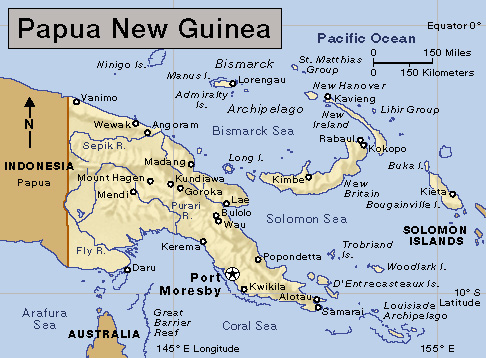Bougainville, << BOO guhn `vihl,` >> is the largest of the Solomon Islands. It lies north of Australia and is part of the nation of Papua New Guinea. Bougainville covers about 3,880 square miles (10,050 square kilometers). Much of Bougainville is mountainous. Its main products include cocoa, copra (dried coconut meat), and timber. It also has copper and gold deposits. It is part of the Autonomous Region of Bougainville, which has a population of about 640,000.

The island is named after Louis-Antoine de Bougainville, a French navigator who mapped the east coast of the island in 1768 (see Bougainville, Louis-Antoine, Comte de). In 1886, the island came under German administration. In 1914, Australia gained control of Bougainville. In 1942, during World War II, Japan captured the island. After Japan’s defeat in 1945, Bougainville was returned to Australia.
In 1975, Papua New Guinea gained independence from Australia. Bougainville became part of the new nation. However, many Bougainvilleans wanted Bougainville to be independent. Conflicts over mining and land rights that began in 1988 soon grew into a fight for independence. Rebel leaders and the Papua New Guinea government signed a cease-fire agreement in 1998 and a peace accord in 2001. The agreement promised Bougainville greater autonomy (self-rule) and authorized a referendum to be held on the question of independence. In 2004, the Parliament of Papua New Guinea approved a constitution for Bougainville. In 2005, Bougainvilleans elected their first autonomous government. In a referendum in 2019, they voted overwhelmingly in favor of independence. However, terms for separation and independence still needed to be negotiated and approved by the government of Papua New Guinea.
See also Papua New Guinea; Solomon Islands.
